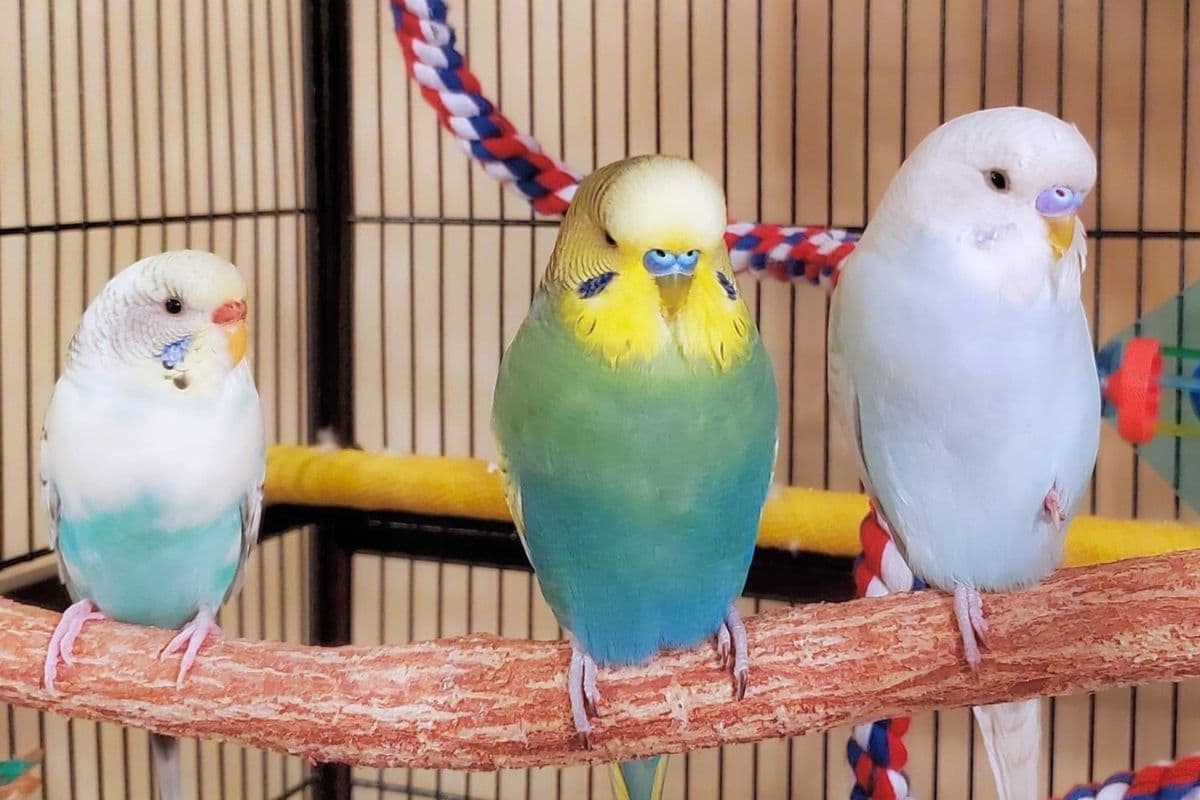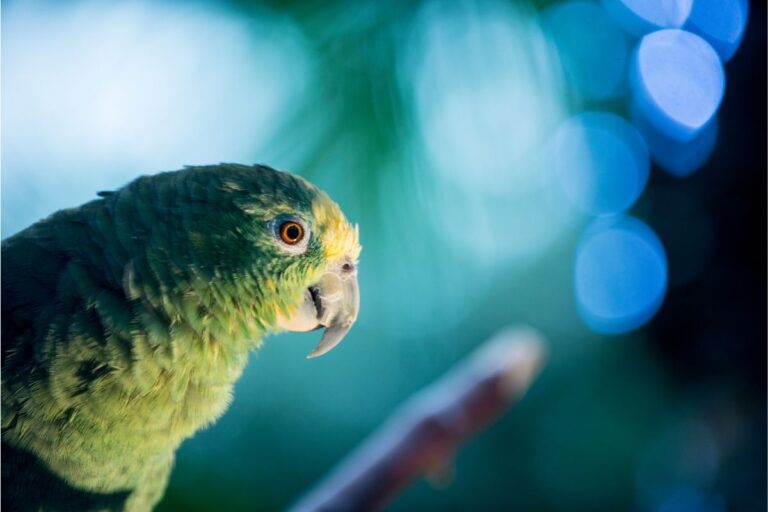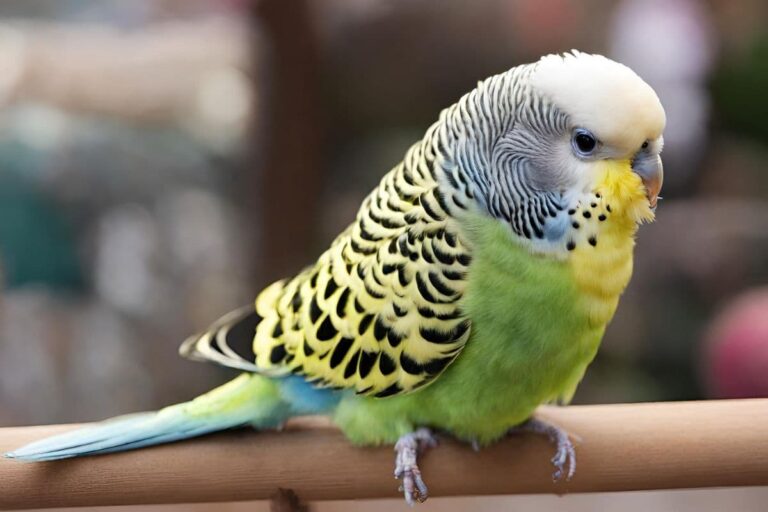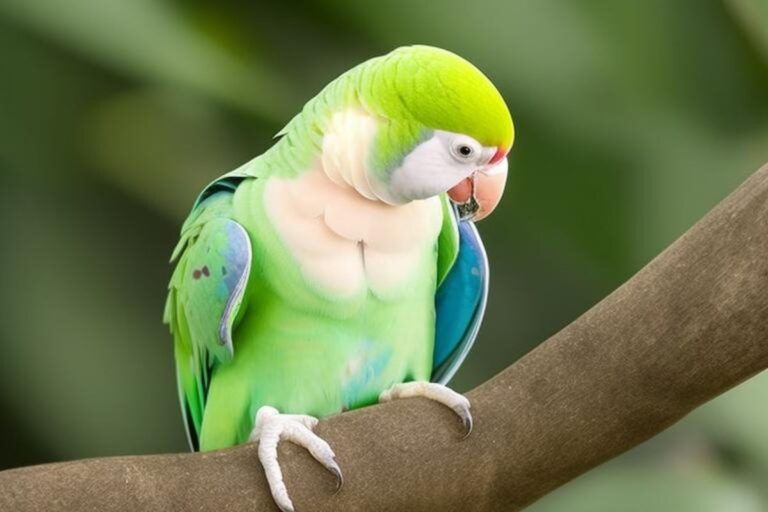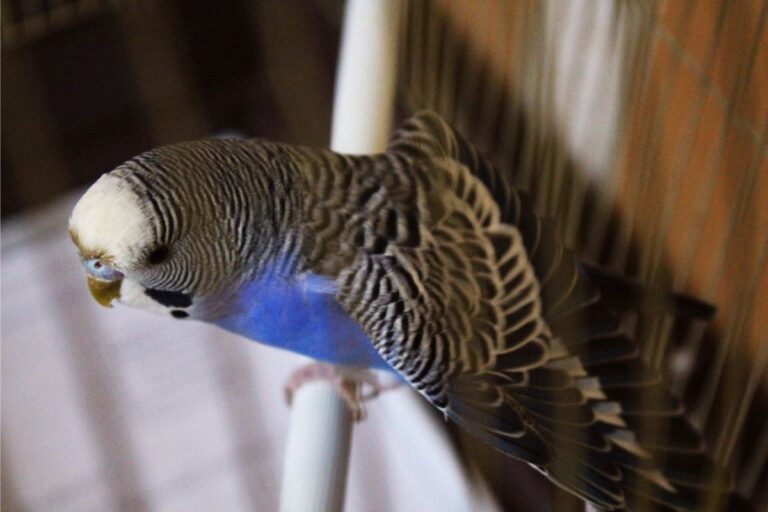How to Tell the Gender of a Parakeet
Disclosure: The opinions expressed in this post are my own. This post may also contain affiliate links, which means that I will receive a commission if you decide to purchase through my links, at no additional cost to you. As an Amazon Associate, I earn from qualifying purchases.
Do you have a parakeet and wonder if it’s male or female? It can be a little tricky to tell the gender of a parakeet just by looking at them, especially if they are young and haven’t developed their adult coloring yet. However, there are a few ways to confidently determine the gender of your feathered friend, including observing their physical characteristics and behavior, and performing DNA testing. With a little bit of knowledge and patience, you can easily tell the sex of your feathered friend and provide the best care possible. In this article, we will explore the different ways to determine the gender of a parakeet, so you can become a knowledgeable bird owner.
How to Tell the Gender of a Parakeet Based on Their Appearance and Behavior?
Determining the gender of a parakeet can be tricky, but there are a few key signs to look for in both their appearance and behavior. These differences are present due to the sex hormones that affect the physical characteristics of their body, and they get more obvious as they mature. Here’s what to look for.
1. Color of Their Cere
One way to determine the gender of a parakeet is by looking at the color of their cere. The cere is the fleshy area above the beak where the nostrils are located.
In adult male parakeets, the cere is typically blue or purplish-blue, while in females it is usually brown or beige. However, it’s important to note that this method will highly be affected by their age.
However, it’s important to note that this method can be highly affected by factors such as age, breeding condition, and mutations. Additionally, some parakeet species have cere colors that are not gender-specific too.
| Age | Male Parakeets | Female Parakeets |
|---|---|---|
| Up to 1 month old | Pink ceres, hard to distinguish between sexes | Pink ceres, hard to distinguish between sexes |
| Approx. 1 – 6 months | Light blue / purple / pink ceres | Light blue / white ceres |
| Adults or approx. 6 months onwards | Dark blue ceres | Pale or brown / beige ceres (noticeably darker when breeding) |
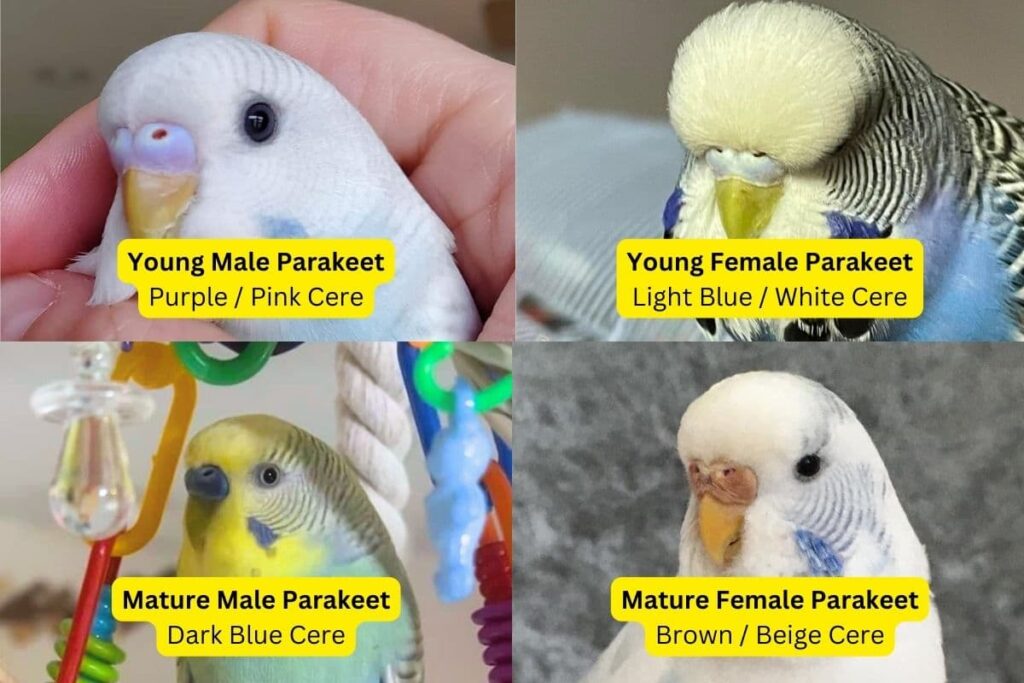
Other factors such as breeding condition and mutations may also affect the accuracy of this method. Also, certain breeds may have different cere color patterns, making it challenging to determine gender without consulting an expert.
Refer to this article if you need help with identifying the age of your parakeet.
2. Colors of the Plumage
Another way to tell the gender of a parakeet is by examining the colors of their plumage. While both male and female parakeets have vibrant feathers, there are subtle differences in their coloring that can help you determine their gender through feather sexing.
In general, male parakeets tend to have brighter and more vivid colors than females. For example, male parakeets often have bright blue or green feathers on their head and wings, while females may have more muted shades of these colors.
3. Color of Their Feet
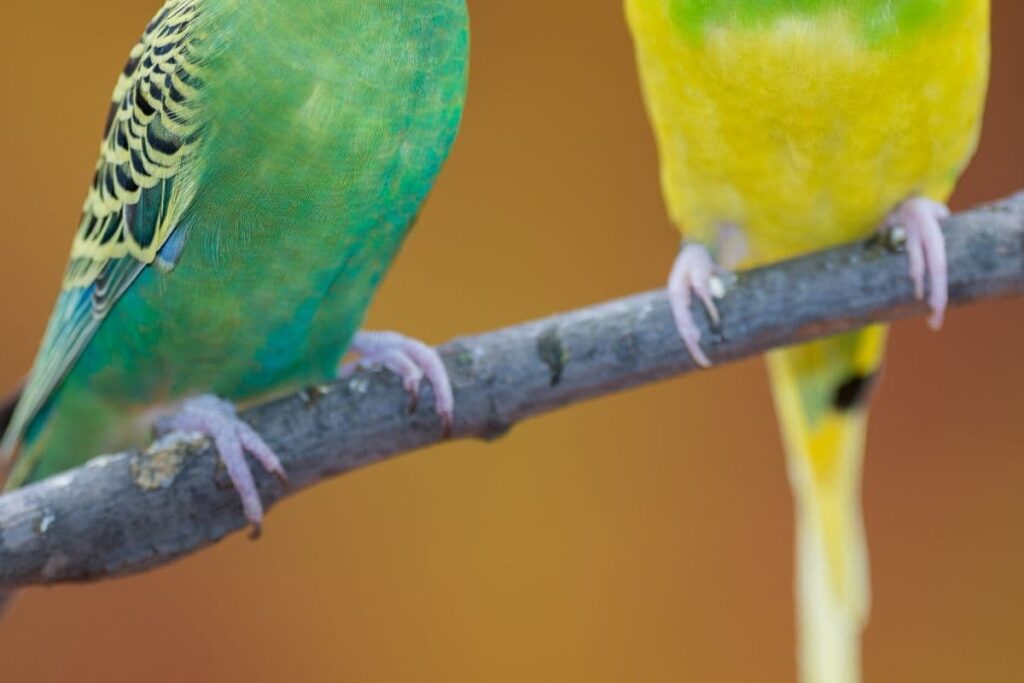
By looking at the color of a parakeet’s feet, you may also be able to determine their gender. Female parakeets typically have a light brown or beige color on their feet, while male parakeets have a bluish or purplish color. This difference in color is caused by the presence of a hormone called estrogen in female parakeets, which affects the pigmentation of their feet.
To get a good look at your parakeet’s feet, gently hold them in your hand and examine the color of their toes and the skin on the bottom of their feet. Keep in mind that some parakeets may have slightly different shades of color on their feet, so it’s best to look for a consistent color across all toes.
It’s important to note that this method of determining gender is not always 100% accurate, as some parakeets may have similar colors on their feet regardless of their gender.
4. Length and Shape of Their Tails
One way to determine the gender of a parakeet is by examining the length and shape of their tails. Male parakeets typically have longer tails that are more pointed, while female parakeets have shorter tails that are more rounded.
In fact, female birds are known to have a preference of mating with male birds with longer tails. The ostentatious tail feathers are associated with greater attractiveness and are an indicator of good health and a strong genetic makeup for the offspring.
It’s important to note that this method should be used in conjunction with other methods, such as examining the color of their cere (the area above their beak) or their behavior.
5. Voice
If you have a good ear, you may be able to tell the gender of a parakeet is by their voice.
Male parakeets have a louder and more complex song than females. They may also sing and mimic sounds more frequently.
Female parakeets, on the other hand, tend to have a softer and more consistent chirp or tweet.
You can also listen for specific sounds like whistling, chirping, and squawking. Males tend to have a wider range of vocalizations while females stick to a few basic sounds.
If you’re still unsure, try playing a recording of a male parakeet singing to your bird. If they respond by singing back, it’s likely a male. If they don’t respond or make a different sound, it’s likely a female.
Keep in mind that some parakeets may not sing at all, so you may need to rely on other physical characteristics and behavior too.
6. Nesting Behavior
Female parakeets are natural nesters and will often show signs of nesting behavior such as shredding paper, rearranging their cage, and even laying eggs. Male parakeets, on the other hand, are not as likely to exhibit nesting behavior unless they are paired with a female parakeet.
Female parakeets will often shred paper and other materials to create a nest for their eggs. They may also rearrange their cage and spend more time in their nest box. If you notice a female parakeet exhibiting these behaviors, it is likely that she is preparing to lay eggs.
On the other hand, the only times when male parakeets may show some nesting behavior if they are paired with a female parakeet. They may help to construct the nest and bring food to the female while she is incubating the eggs. However, if a male parakeet is not paired with a female, the likelihood of them exhibiting nesting behaviors is pretty low.
7. Body Shape
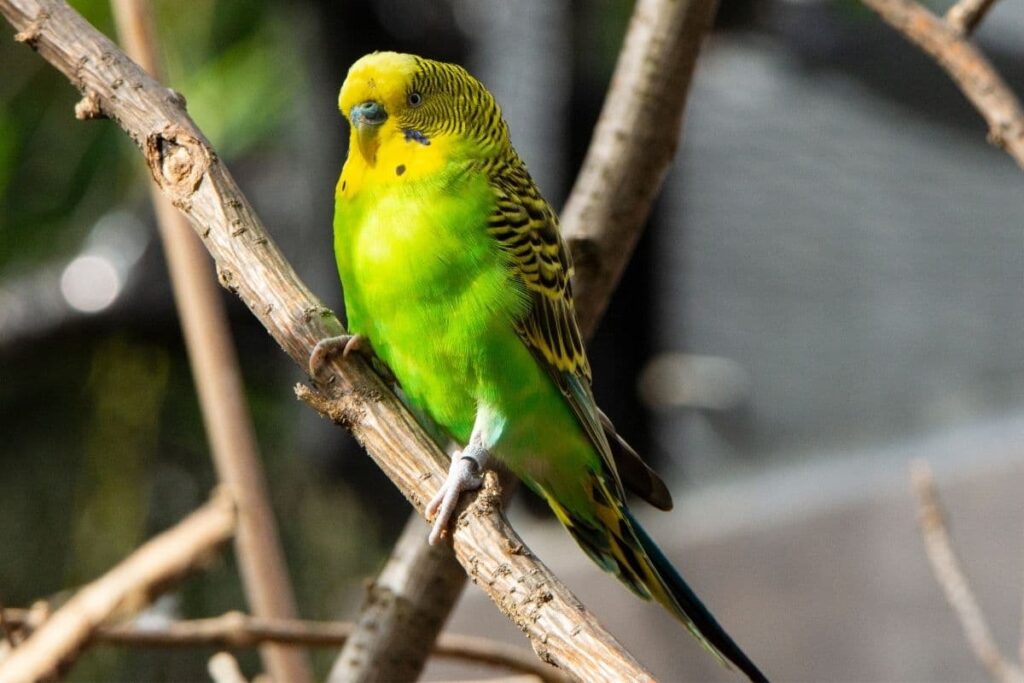
During the first few weeks after hatching, it is almost impossible to tell the boys from the girls. As they start to mature, however, there are some subtle differences in their body shape that you can look for.
If you have a trained eye, you should be able to observe the slightly different body structures between male and female budgies.
Male parakeets tend to have a more streamlined and slender body shape. They have a smaller and more narrow pelvic bone than females, which allows them to have a more streamlined appearance.
In contrast, female parakeets have a rounder and more robust body shape. They have a wider pelvic bone to accommodate egg-laying, which gives them a more rounded appearance.
8. Head & Beak
Male and female parakeets have slightly different head and beak shapes, which can provide clues to their gender.
Male parakeets typically have a larger, broader head with a slightly curved beak. Female parakeets, on the other hand, have a smaller, more slender head with a straighter beak.
These differences can be really subtle and may not be the easiest way in determining gender.
9. More Frequent Display of Aggressive Behavior
Another behavioral difference is that female parakeets may engage in more aggressive behavior, such as biting or chasing other birds. This is because female parakeets are naturally more territorial and may feel the need to defend their space. In certain rare occasions, they may even possibly kill each other if not properly supervised. Male parakeets are generally more docile and less likely to display aggressive behavior, despite them being very socially outgoing.
10. Courtship Behavior
You can also observe your pet birds’ courtship behavior to determine its gender. Male parakeets may perform a courtship dance for a female, which involves bobbing their head, fluffing their feathers, and chirping. Female parakeets may also display courtship behavior, but it is generally less elaborate than that of males.
11. Laying Eggs
Well, this is probably an obvious one.
Female parakeets are the only ones capable of laying eggs, so if you notice your bird laying eggs, it’s safe to assume that it’s a female.
However, one thing to note is that if a parakeet does not lay eggs, it does not mean that it’s a male. Not all female parakeets will lay eggs. Factors such as age, diet, and living conditions can all play a role in whether or not a female parakeet will lay eggs.
12. Color Mutations
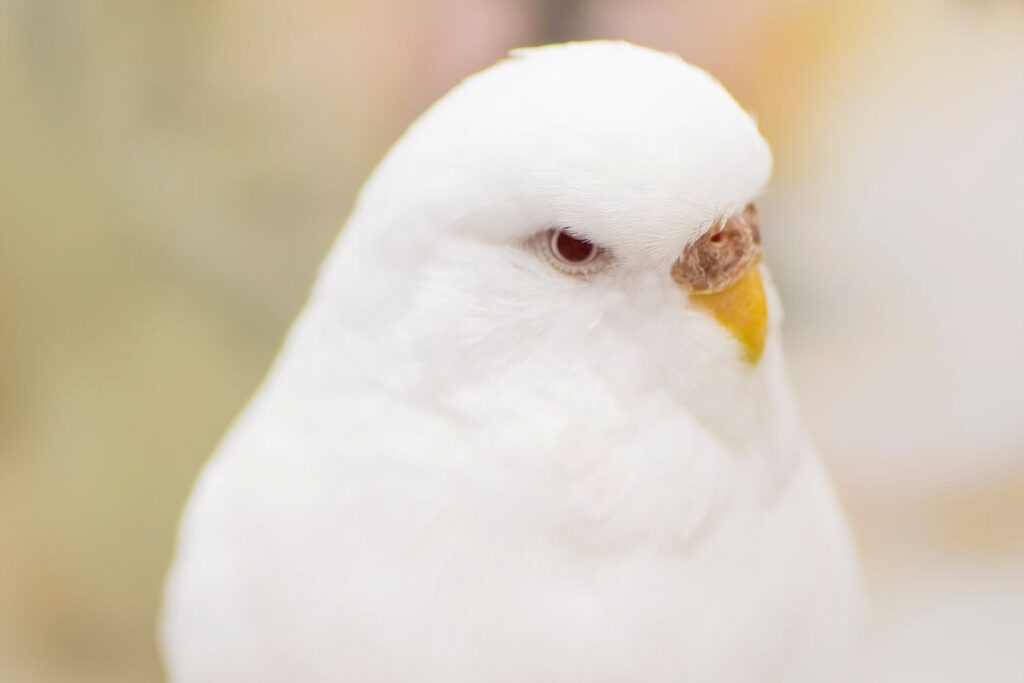
Some color mutations are sex-linked, meaning they are more common in one gender than the other.
The two main color mutations that can be used to sex budgerigars are the cinnamon and the fallow. Cinnamon budgerigars are brown instead of green and fallow budgerigars are brown with patches of white or cream. Both of these mutations are scored as sex-linked recessive, which means that a female must inherit two copies of the gene (one from each parent) to display the mutation, while a male only needs to inherit one copy. This means that if you have a cinnamon or fallow budgerigar, it is most likely a female.
Also, the lutino mutation is more common in female parakeets, while the cobalt mutation is more common in males.
By learning about these color mutations and observing your parakeet’s physical characteristics, you may be able to determine its gender with greater accuracy.
Using a Bird DNA Sexing Test Kit
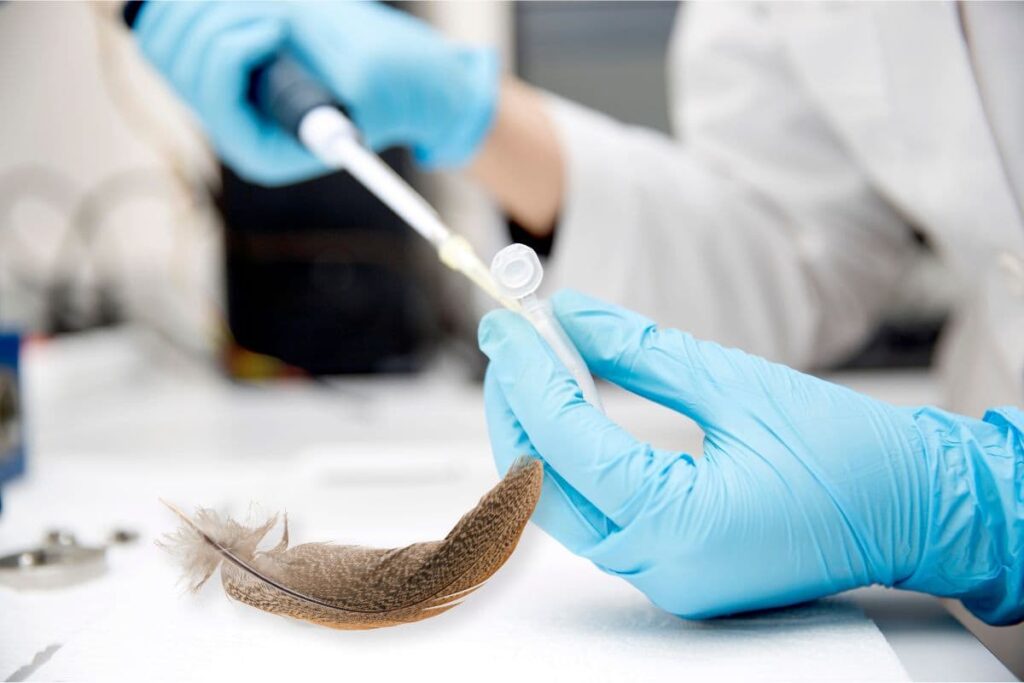
If you want a definitive answer on the gender of your parakeet, a bird DNA sexing test kit may be the way to go. These kits are widely available online and allow you to collect a small blood sample from your bird and send it to a lab for analysis.
This process of blood sexing is simple and relatively quick. You’ll need to follow the instructions carefully to collect the blood sample, which usually involves pricking the bird’s toe or toenail with a small needle, or via a feather sample. Once you have the DNA sample, you’ll need to send it off to the lab in the prepaid envelope provided with the kit.
The lab will analyze the DNA in the blood sample to determine the bird’s gender. Most kits offer a turnaround time of around 3-5 days, so you won’t have to wait long for your results.
Using a bird DNA sexing test kit is a reliable way to determine the gender of your parakeet, especially if you’re unsure or if your bird is too young to show physical signs of gender. It’s also a good option if you want to breed your bird or if you’re curious about the genetics of your pet.
Recommended Bird DNA Test Kit
The Bird Sexing DNA Gender Reveal Test by Pollygene is a quick and highly accurate DNA gender test kit that we recommend. It works with parakeets, parrots, lovebirds, cockatoos, macaws, cockatiels and other kinds of psittacines. DNA samples can be obtained using blood, feathers or egg shells.
This test kit is relatively simple to use, with easy-to-follow instructions, and it will allow you to accurately identify the sex of my birds with ease.
You’ll be glad to know that the sample collection process is relatively painless for your feathered friends too! Just be sure to isolate your budgies and do the tests one at a time, to avoid any kind of cross-contamination that may affect the results.
Bringing Your Parakeet to a Vet
Another highly reliable way to find out is by bringing your bird to a veterinarian. Not only can they examine the bird’s reproductive organs, but they can also use an endoscope to get a close-up look.
Endoscope sexing is a common practice used by veterinarians to determine the gender of birds. This involves inserting an endoscope into the bird’s cloaca, which is the opening where waste and eggs are expelled. The endoscope allows the vet to view the bird’s reproductive organs, which can reveal whether the bird is male or female.
It’s important to note that endoscope sexing should only be performed by a qualified veterinarian. Attempting to do it yourself could harm the bird or cause unnecessary stress. Additionally, not all vets may offer this service, so it’s important to do your research and find a vet who specializes in avian care.
Instances Where It’s Harder to Identify the Gender of Your Parakeet
While it’s relatively easy to identify the gender of a parakeet, there are instances where it can be a bit more challenging. This is particularly true for younger birds that haven’t fully developed their physical characteristics yet.
1. The Bird is Still Young
One instance where it may be harder to identify the gender of your parakeet is when they’re still very young. Parakeets typically reach sexual maturity at around six months of age, so if your bird is younger than that, it may not have developed the physical characteristics that make it easy to tell the gender.
2. Hybrid or Mutation Species
Another instance where it can be more difficult to identify the gender of your parakeet is if your bird is a hybrid or a mutation. These birds may have physical characteristics that are different from the typical male or female parakeet, making it harder to tell which gender they are.
3. When It’s Sick or Stressed Out
If your parakeet is sick or stressed, it may not display the typical physical characteristics that make it easy to identify the gender. In these instances, you may need to rely on other clues, such as behavior or vocalizations, to determine your bird’s gender.
Overall, while it’s usually easy to tell the gender of a parakeet, there are instances where it can be more challenging. If you’re having trouble identifying your bird’s gender, it’s always a good idea to consult with a veterinarian or an experienced bird owner for guidance.
Final Words
Determining the gender of a parakeet can be a tricky task, but with the right knowledge and tools, it can be done accurately. It’s important to remember that not all parakeets will display the same physical characteristics, so it’s always best to confirm the gender with a veterinarian or avian expert.
By observing the bird’s behavior, physical traits, and using DNA testing, you can confidently identify the gender of your parakeet and provide the best care possible.
Whatever the results are, enjoy your feathered friends, no matter their gender!



